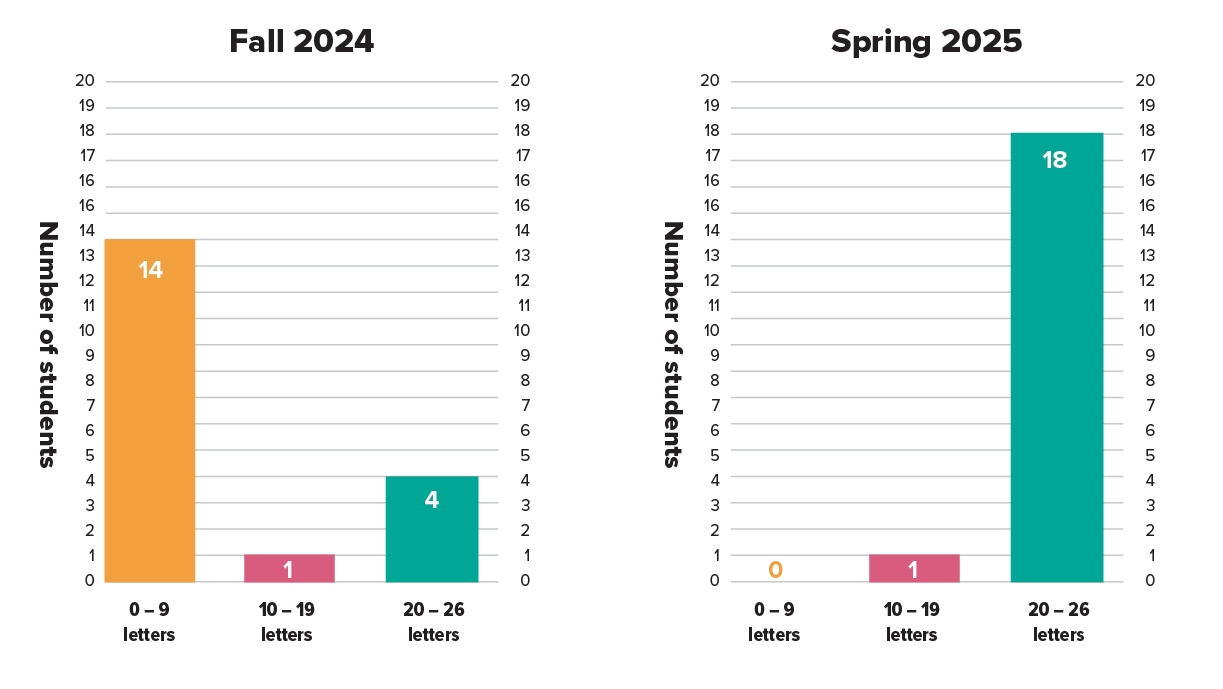Newton Elementary 24-25


OUR LEARNERS
BIG IDEA
"Literacy involves understanding the world around us, and communicating with others as a foundation for all learning. As students grow their literacy skills, they deepen their ability to connect, create, wonder and imagine. The BC curricular competency of Creating and Communicating focuses on students engaging actively as listeners, viewers and readers to develop understandings of self, identity and community.
WHY THIS GOAL MATTERS
Learning to read and understand print is a critical skill for our youngest learners as they begin their journey into school. Decoding text (identifying letter / sound relationships, blending sounds ) allows students to make meaning of written words. Learning to read activates our imaginations, connects us to ourselves, our communities. and the world. Reading and understanding text allows students to succeed across all areas of learning.
Our learners can:
identify letter sounds
blend sounds to read simple words
track print left to right
choose print material for reading independently and with peers
use picture clues to help with understanding
Teachers provide multiple avenues for students to access and make sense of print.
In the video below, a student demonstrates their ability to identify letter sounds using sound boxes. With prompts from the teacher, the students are able to blend sounds to form simple words.
This student has learned to identify and blend letter sounds. They are able to read simple CVC (consonant-vowel-consonant) words. They can decode these words and read a story to their teacher or a friend.
Our Intermediate students have shown how they can "respond to text in personal and creative ways" through reading, listening and viewing. This process reflects the BC curricular competency to Comprehend and Connect. The following example teaches about gratitude for salmon as a source of Indigenous cultural identity. Students responded by connecting to the First Salmon Ceremony and describing what they are grateful for in their lives. 
OUR FOCUS
The BC curriculum highlights the fundamental importance of reading, which brings satisfaction, purpose and joy to our lives.
Our focus is on Literacy, targeting reading in the early grades. Reading and understanding print are foundational skills for learning in school. Reading allows students to be successful across curricular areas, and to make connections to themselves, others and the world.
The BC curricular competency of Creating and Communicating focuses on students engaging actively as listeners, viewers and readers to develop understandings of self, identity and community.
Our cohort has grown to include numerous early primary students from several classrooms.
Our students’ learning goals include:
Identifying sounds associated with letters
Segmenting sounds in a word (cat = c - a - t)
Blending letter sounds c - a - t = cat)
Demonstrating an understanding that words have meanings
The following videos illustrate how students use decoding skills (the relationship between letters and sounds) to gain fluency and comprehension..
OUR NEXT STEPS
We use language to identify, create, and share ideas, feelings, opinions, and preferences.
The curricular competency we explored was Creating and Communicating. This competency focuses on students engaging actively as listeners, viewers and readers to develop understandings of self, identity and community.
Our students’ learning goals included:
Identifying sounds associated with letters
Segmenting sounds in a word (red = r - e - d)
Blending letter sounds (r - e - d = red)
Demonstrating an understanding that words have meanings
The journal entries below show one student's growth in their ability to understand letter sounds and blend them together to form words. In this example, the student has moved from Emerging (beginning to understand the concepts) to Proficient (demonstrating a solid understanding of the concepts).
The first journal entry was completed in Term 1. Here the student is able to sound out and write the first letter of the words in the sentence. W for "wear" M for "my" and B for "boots." In the second entry, the student is able to add more details to their writing. We can see that the student understands each word is separated with a space and is able to blend letter sounds to create more complete and accurate words.


Students showed their growth in learning using the ELPATS (Early Literacy Phonemic Awareness Tool Surrey) in fall and again in spring. In the chart below, students were shown the alphabet and asked to say the name of the letters. In fall, 4 students were Proficient as they recognized 20-26 letters. In spring, that number grew to 18 students who were Proficient in letter recognition!
LETTER RECOGNITION (NAME OF LETTERS)

The chart below shows student growth in identifying letter sounds. In fall, 2 students could identify 20-26 letter sounds. In spring, that number jumped to 18.
LETTER SOUNDS (WHEN SHOWN LETTER)

Observations: Targeted Learning Support
At Newton Elementary, our team approach has shown successful outcomes in reading and writing for our youngest learners. Primary students receive support from the classroom teacher, Early Literacy Teacher, and the Learner Support Team. The team works with students to develop phonemic awareness (first, last and middle sounds, number of syllables, blending first sound with the rest of the word, blending individual sounds and learning to identify rhyming words). Students practiced their phonics skills through writing as well.
Moving Forward We Will
Our team will continue to focus on engaging, purposeful activities and instructional strategies that promote the connections between sounds and letters for our youngest students. We have found that culturally relevant texts and images deepen understanding for many of our students. We are wondering if the successes of our early literacy programs will be evident as we move into the Intermediate years.
Connect
As students learn to read they connect with different ideas, learn about new things, places and experiences. As students develop fluency in reading, and can understand what they read, a vast world of learning opens up before them.
